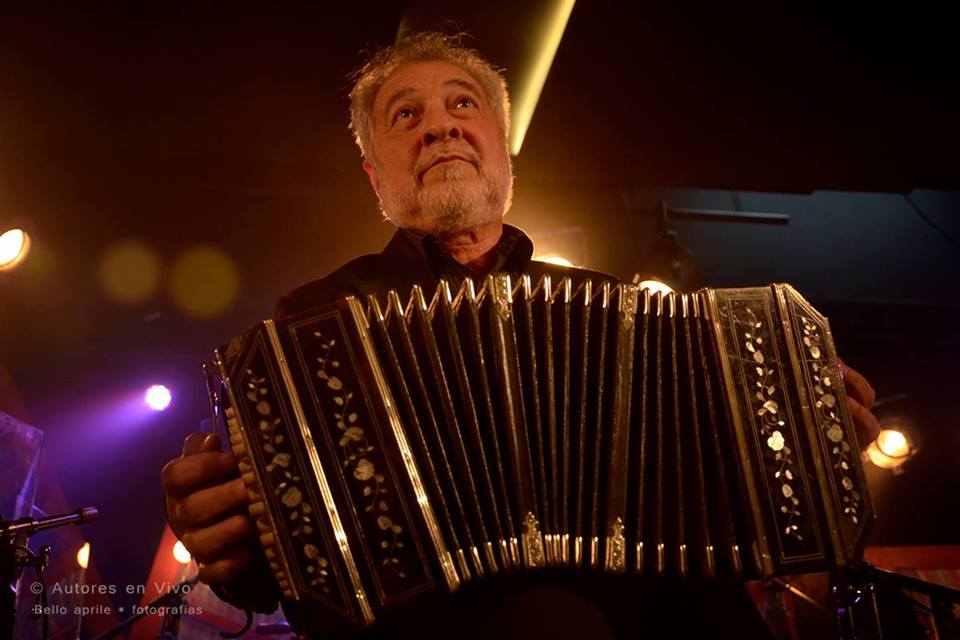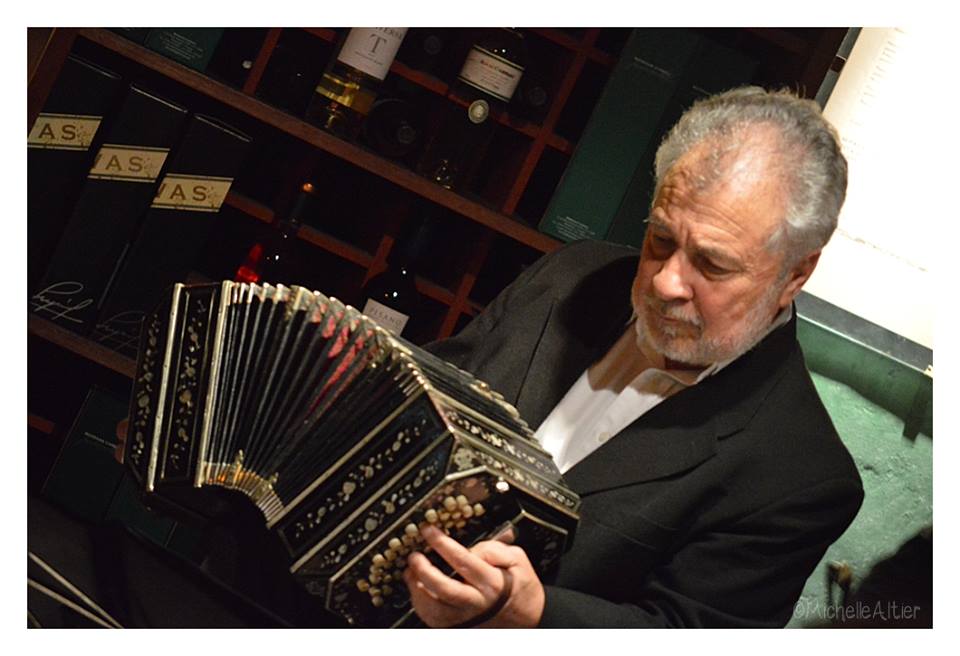Interview and Intro by Sima
NESTOR VAZ – Interview in Milonga de la Gente Series
This is a joint initiative by Tango Synergy and Sydney Tango for Milonga de la Gente, to be held on 29 October, Petersham Town Hall.
An interview with Nestor Vaz was a privilege and a delightful insight into the visions and aspirations of a remarkable individual as a maestro musician and a worldly man with far ranging interests in the history of the earth and its peoples.
The twinkle in his eyes displays a lively intelligence and enduring curiosity and there is a gentle sympathy and understanding with those he is mentoring or with whom he is conversing.
Nestor Vaz is a man who has experienced and accomplished much in his life and whose desire is to share his music and knowledge with others, especially those young musicians he meets in his travels around the world.

1. What were your first inspirations to become a musician.
Mi casa! My father was a bandoneonista and played to me from the moment I was born, so tango music surrounded me even in my crib. I have these wonderful memories of my father playing. Here is a video clip I made in 1999 as a homage to my father on his passing – Adios Nonino (A.Piazzolla).
https://www.youtube.com/watch?v=YooYoItdOIo
2. What inspired you to take up the bandoneon and when did you begin.
My father gave me my first bandoneon when I was eight years old and was my first teacher. Over the next years, we toured together playing and singing to support our family and later playing at tango milongas for the tango dancers.
3. Describe the experience of playing as a solo musician, as compared to playing within a quintet or trio, or larger orquesta.
Of course I have given many solo concerts, but my heart is in working within an ensemble, working with musicians at home or around the world, to enable a unique sharing of a musical dialogue, which produces a special chemistry between us and with our audience.
One of the great collaborations of my career was working with the wonderful tango singer Gustavo Nocetti from 1990 until his unfortunate death in a car accident in 2002.
https://www.youtube.com/watch?v=m3rtWKWDZM8
4. How did Nestor Vaz Quinteto begin? Did all members come from within a tango background.
Nestor: After searching many years for the right musicians, I have been incredibly lucky in finding Uruguayan artists who understand and share my interpretation of the music of the Rio de Plata (which separates Uruguay and Argentina) to which we were born and resides within us. We have played together as a Quinteto for the past 9 years, with ever increasing harmony between us, sharing a personal, musical and professional relationship.
https://www.youtube.com/watch?v=ne8gsvHOD1o
https://www.youtube.com/watch?v=H_YWB1nabrk
https://www.youtube.com/watch?v=fxWe_XBOqes
5. Are there different musical language skills needed to play tango music specifically for tango dancers.
The musical language is the same, but the style of playing varies and it must be offered in a manner to reach and include the dancers. Our goal as tango musicians is to move our audience to respond to the music. Each orquesta must be represented as a different mood and therefore played in a different manner – for example, the energy of D’Arienzo and the subtlety of Pugliese.
Although I played for many years as a concert musician, I danced tango at home with my young sister and originally played in milongas for tango dancers and my goal was to engage them in the music,
as if building a house together: Imagine the floor as the blank canvass for the steps of the dancers, the roof as the melody, the walls as the underlying rhythmic structure which supports the melody.
6. Do you need to transcribe orchestral scores to suit you as a musician or for your orquesta, or do you use original arrangements of great composers.
As a form of respect, I use the original arrangements by the original orquestas. This maintains the integrity of their music and keeps it absolute and alive.
7. Do you have favourite tango songs you love playing for tango dancers and how do you change/refresh your repertoire.
I love to play Troilo and Pugliese, early Piazzola and Salgan.
However, I strongly believe we also need new danceable tango music composition, and this may come from Uruguay or Argentina or from some other part of the world, where many great young orquestas are forming and creating.
8. How have trips abroad affected your playing and the repertoire you play.
I have spent the most time in the cities of Montevideo, Montreal and Amsterdam and produced a CD to pay homage to these 3 great cities. However, my music is always the same and I take this music around the world. My greatest satisfaction is when I have a spontaneous response from the audience, be they listeners or dancers. For instance, they may begin to clap or hum in time to the music when they recognize something like “La Cumparsita”, and I know the music has resonated with them.
9. Do you enjoy collaborating with younger musicians. As well as you sharing your vast experience and knowledge with them, does working with various tango orquestas on your travels give you fresh insights and inspirations.
At this stage of my life, I feel the need to be a facilitator to collaborate with younger musicians and pass on my musical knowledge, so I am really living my dream during this visit to Sydney. There are certain codes which you must follow in each tango music style, and the music from the Golden Era will always be sacred and to be revered, but I love the way the new generation of young tango musicians are creating their own sound and bringing new input into Tango music and this certainly inspires me.
It is time for a new Golden Age. I believe it is the responsibility of tango teachers everywhere to encourage their developing and professional dancers to both present their dance to the traditional Golden Age music but also to new tango compositions and orquestas.
10. Have you had any special adventurous periods of your life in other fields outside of tango?
My other love is science, knowledge and research – the fundamentals of earth science particularly in the field of geology. After working in this field for the Uruguayan Government and within the Montevideo University, I find this knowledge of the planet gives an insight into life on Earth and the people who live on it. And this encompassing view and knowledge enhances my understanding of the music which is an integral part of my life.
11. What are your future plans. Do they concentrate on classical, tango or tango for dancers – as a Solo artist or as part of an orquesta. Do you have any planned recordings for imminent release.
The Nestor Vaz Quinteto will be releasing a compilation of Piazzola and Gardel songs – from the original scores but with new arrangements and a new flavour. My aspiration will be playing for listeners and dancers with my ensemble and mentoring young tango musicians around the world.
12. Is it exciting to play with two different orchestras for your farewell milonga at Milonga de la Gente?
Yes, I am VERY excited to work with these two orquestas for my Farewell – it has been such a joy to work with them in rehearsal and performance and will be a wonderful finale for my visit.

